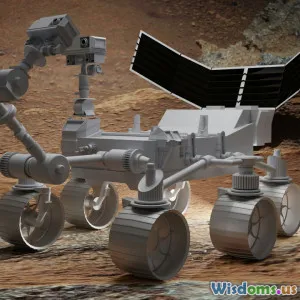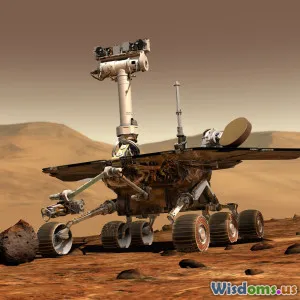
The Role of Telescopes in Discovering Exoplanets
5 min read Explore how telescopes have revolutionized the discovery of exoplanets and their significance in the search for extraterrestrial life. (0 Reviews)
The Role of Telescopes in Discovering Exoplanets
The quest to discover exoplanets—planets located outside our solar system—has been one of the most exciting frontiers in space exploration and astronomy. As our understanding of the cosmos expands, telescopes have emerged as indispensable tools in this endeavor. From their early days to the sophisticated instruments of today, telescopes have revolutionized our approach to locating and studying these distant worlds.
Understanding Exoplanets
Exoplanets are defined as planets that orbit stars outside our solar system. The first confirmed detection of an exoplanet around a sun-like star occurred in 1995 when astronomers Michel Mayor and Didier Queloz discovered 51 Pegasi b, a gas giant. Since then, thousands of exoplanets have been confirmed, thanks to advancements in telescope technology and astrophysical methods.
The Evolution of Telescopes
Telescopes have evolved tremendously since their inception. The first telescopes, developed in the early 17th century, were simple refractors. However, modern telescopes employ a variety of technologies:
- Optical Telescopes: These use lenses or mirrors to gather light from celestial objects. They are instrumental in observing visible light from exoplanets.
- Radio Telescopes: These detect radio waves emitted by celestial bodies, allowing scientists to study the atmospheres of exoplanets.
- Space Telescopes: Instruments like the Hubble Space Telescope and the upcoming James Webb Space Telescope operate outside Earth's atmosphere, enabling clearer and more detailed observations of exoplanets.
Techniques for Discovering Exoplanets
Telescopes utilize several techniques to discover and characterize exoplanets:
1. Transit Method
This method involves monitoring a star's brightness over time. When a planet passes in front of its host star, it temporarily blocks a small fraction of the star's light, causing a detectable dip in brightness. Telescopes like Kepler have extensively employed this technique, leading to the discovery of thousands of exoplanets.
2. Radial Velocity Method
This technique measures the star's wobble caused by the gravitational pull of an orbiting planet. Telescopes equipped with spectrometers can detect shifts in the star's spectral lines, indicating the presence of a planet. This method has been crucial in confirming the masses of many discovered exoplanets.
3. Direct Imaging
While challenging, direct imaging of exoplanets is possible with advanced telescopes that can block out the light from their parent stars. This method allows astronomers to study the atmospheres and compositions of exoplanets, providing vital information about their potential habitability.
The Impact of Exoplanet Discoveries
The discoveries of exoplanets have far-reaching implications:
- Understanding Planetary Systems: The variety of exoplanets observed has expanded our knowledge of planetary formation and the diversity of planetary systems.
- Search for Extraterrestrial Life: Identifying Earth-like exoplanets in the habitable zone—the region around a star where conditions might be right for life—has intensified the search for extraterrestrial life.
- Astrobiology: The study of exoplanet atmospheres is providing clues about their compositions, potentially revealing biosignatures—indicators of life.
Future of Exoplanet Discovery
The future of exoplanet discovery looks promising with upcoming missions and advancements in telescope technology. The James Webb Space Telescope, set to launch in the near future, is expected to provide unprecedented insights into the atmospheres of exoplanets, potentially identifying key elements necessary for life.
Conclusion
Telescopes have transformed our understanding of the universe by enabling the discovery of exoplanets. As technology continues to advance, our ability to explore these distant worlds will only grow, bringing us closer to answering profound questions about our place in the cosmos and the possibility of life beyond Earth. The role of telescopes in this journey cannot be overstated, as they serve as our eyes into the universe, revealing the wonders that lie beyond our solar system.
Rate the Post
User Reviews
Popular Posts





















